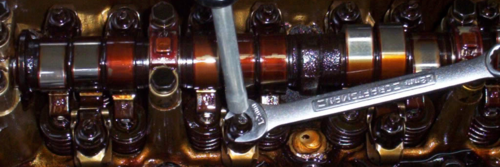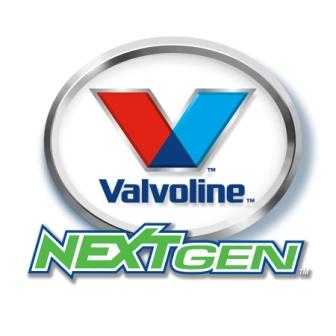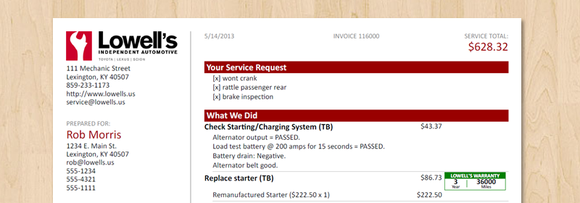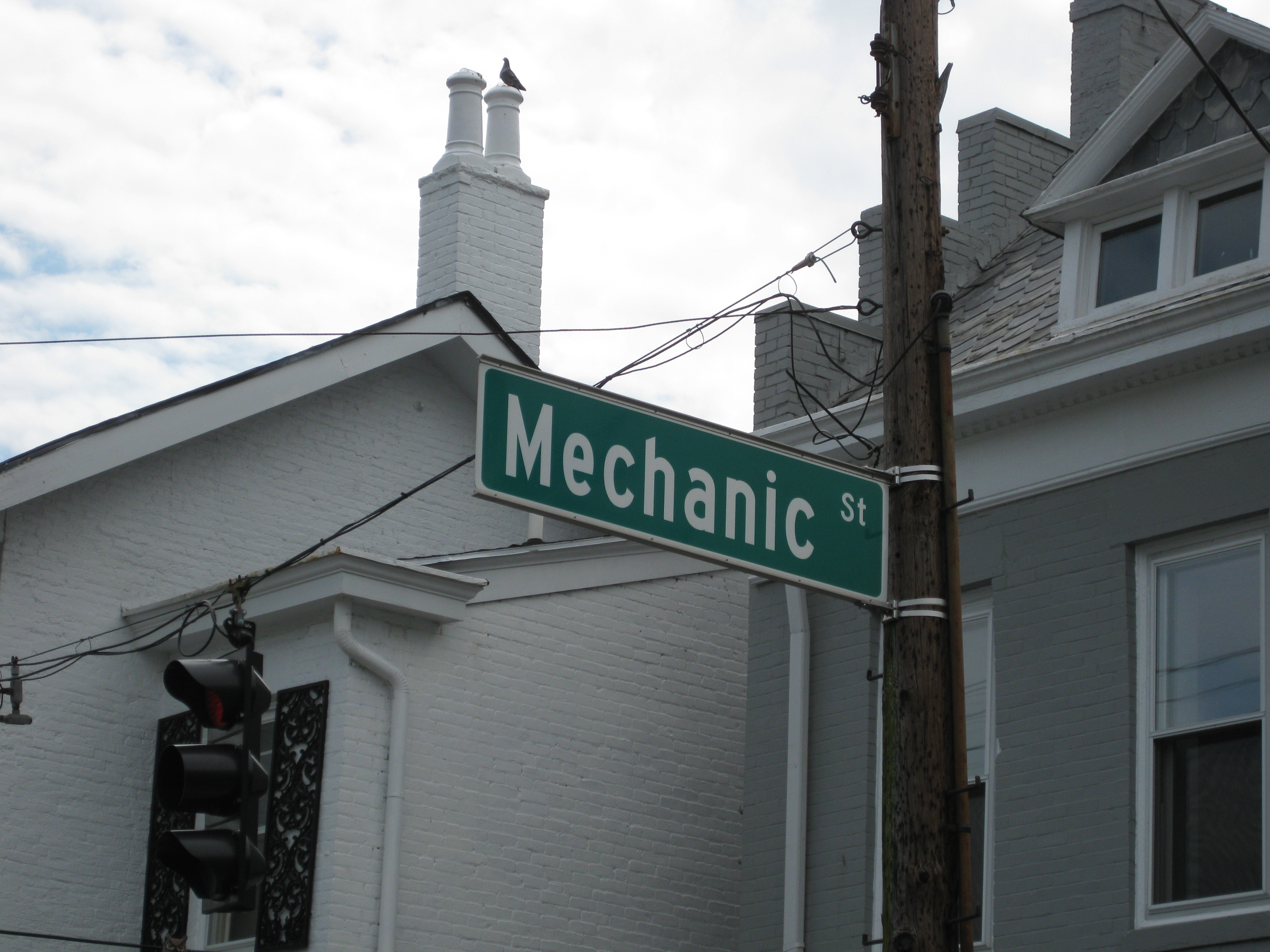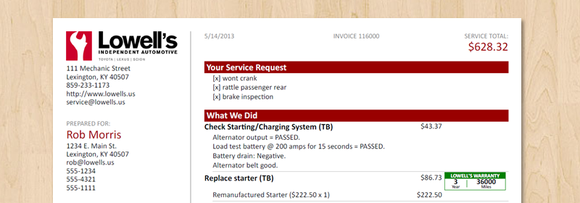 Every customer deserves to understand exactly what we’ve done while servicing their vehicle at Lowell’s. Over the past few months, we’ve introduced a new invoice design which helps do just that. We built it from scratch to make it easier to see just what you are getting with every visit to Lowell’s.
Every customer deserves to understand exactly what we’ve done while servicing their vehicle at Lowell’s. Over the past few months, we’ve introduced a new invoice design which helps do just that. We built it from scratch to make it easier to see just what you are getting with every visit to Lowell’s.
After looking at a lot of invoices, we think ours is the best invoice in the repair industry.
But why care about your mechanic’s invoice? Because the invoice tells you a lot about your mechanic, and whether they want you to be informed about your car and their work. Here’s what our invoice does for you:
Easier Reading
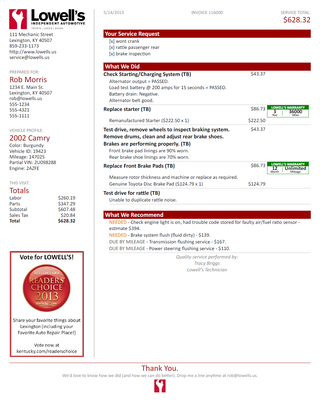
Click image to magnify
We’ve placed basic information about you and your vehicle along the left side of the invoice, while the main part of the invoice shows details about this visit to Lowell’s.
Making Our Work Clearer for You
We’ve organized the core of our invoice into three sections to help you see what we did (and what we did not do). A dark red bar visually marks the beginning of each section.
Your Service Request outlines the reasons you brought your car into Lowell’s.
What We Did contains the details surrounding the work we’ve done to your vehicle.
What We Recommend tells you about items we noticed during your service which might need your attention soon, along with estimates for addressing each issue.
Job by Job
Lots of repair places lump their work into a big jumble which makes it hard for customers to figure out what they’re paying for. Many dealers, for example, take the labor from several separate jobs and smush it all together into a single big labor charge. That makes it really, really hard to decode what they’re really, really charging you for.
At Lowell’s, we want you to see exactly what you are paying for. For each distinct job in our What We Did section, we show you our labor (in bold) and every part used (indented). These items are grouped together by job – a Lubrication Service, say, is clearly separated from other work, like a Brake System Flush. Our charges for each component of a job are also clearly shown.
The Best Warranty in the Business
We really stand behind our work here at Lowell’s. Most of our repair work carries an unmatched 3 year, 36,000 mile warranty – three to twelve times the warranty of most dealers and other shops for the same work.
Whenever we do work for you which carries a warranty, your invoice will clearly show that with a green “warranty box”, which describes the duration of the warranty for that particular work.
Because we also note the date and your vehicle’s mileage on each invoice, you can easily see whether a repair is still covered. (And if it is, we’ll fix it, of course.)
You Can Plan Ahead
When we notice things during your service which might need your attention, we try to prioritize those items for you in the What We Recommend section of the new invoice.
Related Post: How we make recommendations at Lowell’s.
We color-code each recommendation to help you understand its urgency: Red means that the item represents a potential safety issue, and should be addressed immediately; Orange means that the item could damage your vehicle soon if left untreated; Yellow denotes items which you should address to keep your vehicle operating smoothly; and Gray indicates items which might be due according to your vehicle’s mileage (usually these are items we can’t confirm the need for with a simple visual check and which might have been done elsewhere).
::
Our new invoice clarifies our work, and helps you plan how to keep your car running long into the future. We think it reflects the unique ‘spirit’ of Lowell’s toward automotive repair: open, direct, clear, and easy to understand.
As always, we’d love to know how we can do better (with this invoice or any other aspect of our service). Let us know what you’d like to see in the comments below.

